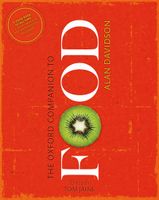Advertisement
Poland
Published 2014
The shape and form of a nation’s cuisine is at first wholly dependent on its soil and climate. In later years it may also be moulded and polished by its proximity to trading routes, and by war, foreign influences, economic prosperity, religion and so on, but its basic characteristics remain. The elementary ingredients of Poland’s cuisine were dictated by the rich, dark soil and the harsh northern climate, which yielded cereal crops such as rye, wheat, millet, barley and buckwheat. From these came bread: from rye the beautifully dark, dense, moist loaves so typical of this part of Europe; and, from other grains, white bread with which soups were made and whose stale crumbs were used to thicken and bind stuffings and sauces. Fried breadcrumbs have long been used as a garnish in Polish cooking, and à la Polonaise, which means a garnish of fried breadcrumbs, often with diced hard-boiled egg, is part of international gastronomic vocabulary.


